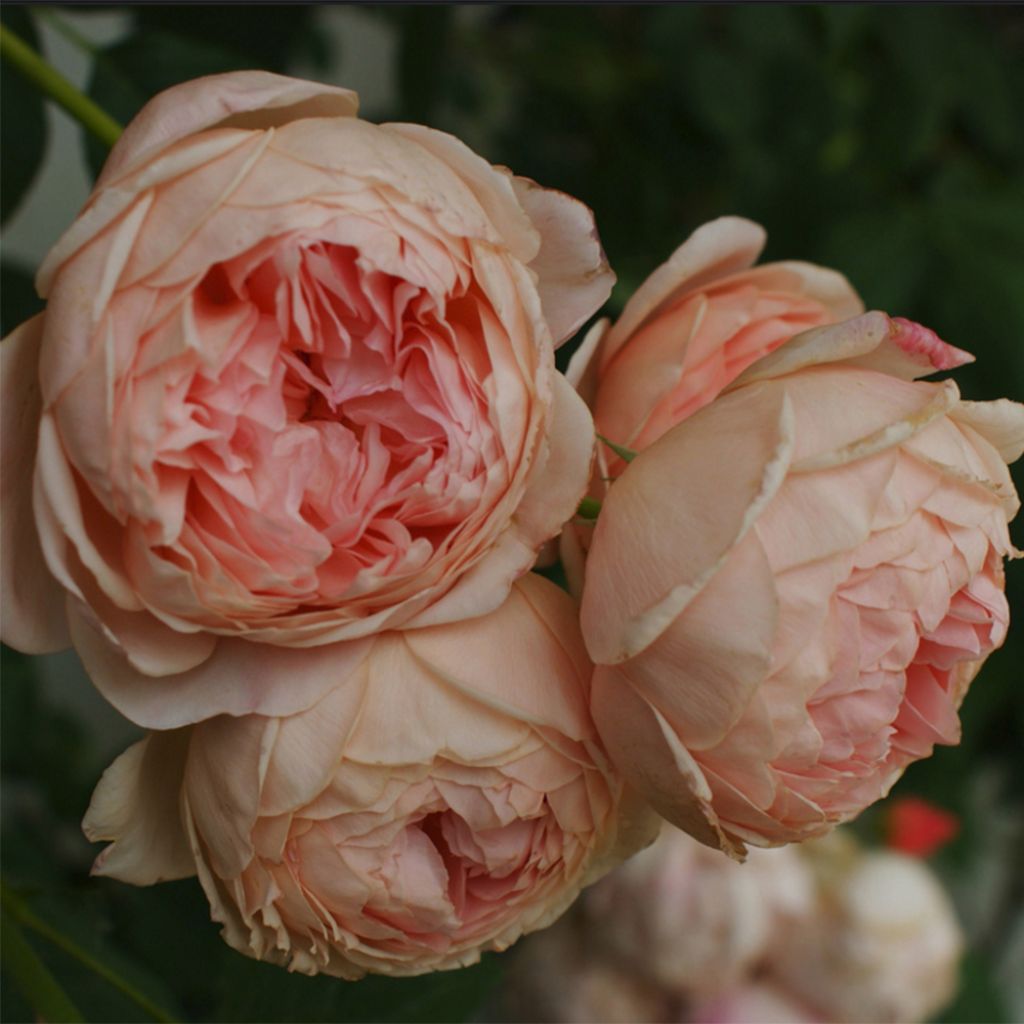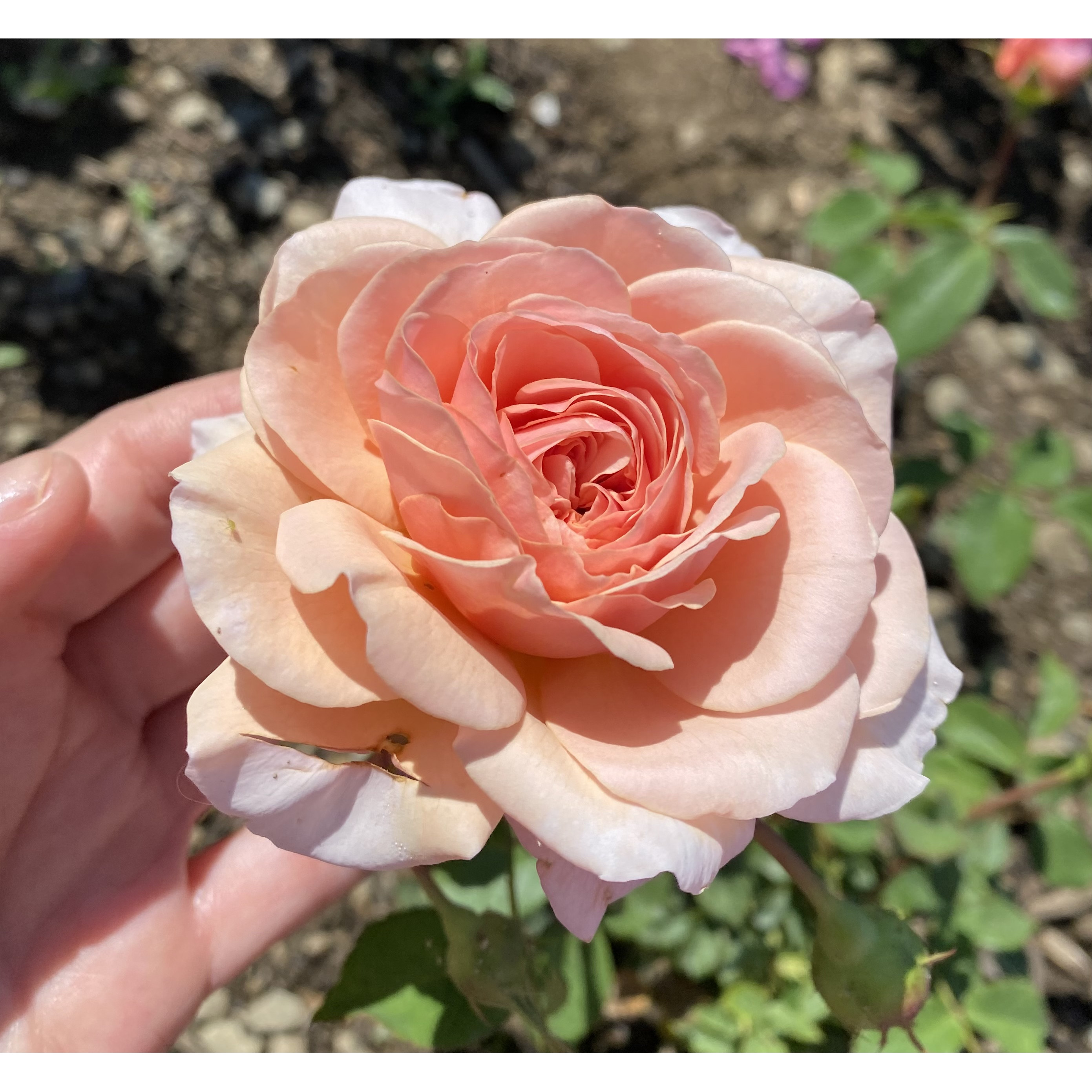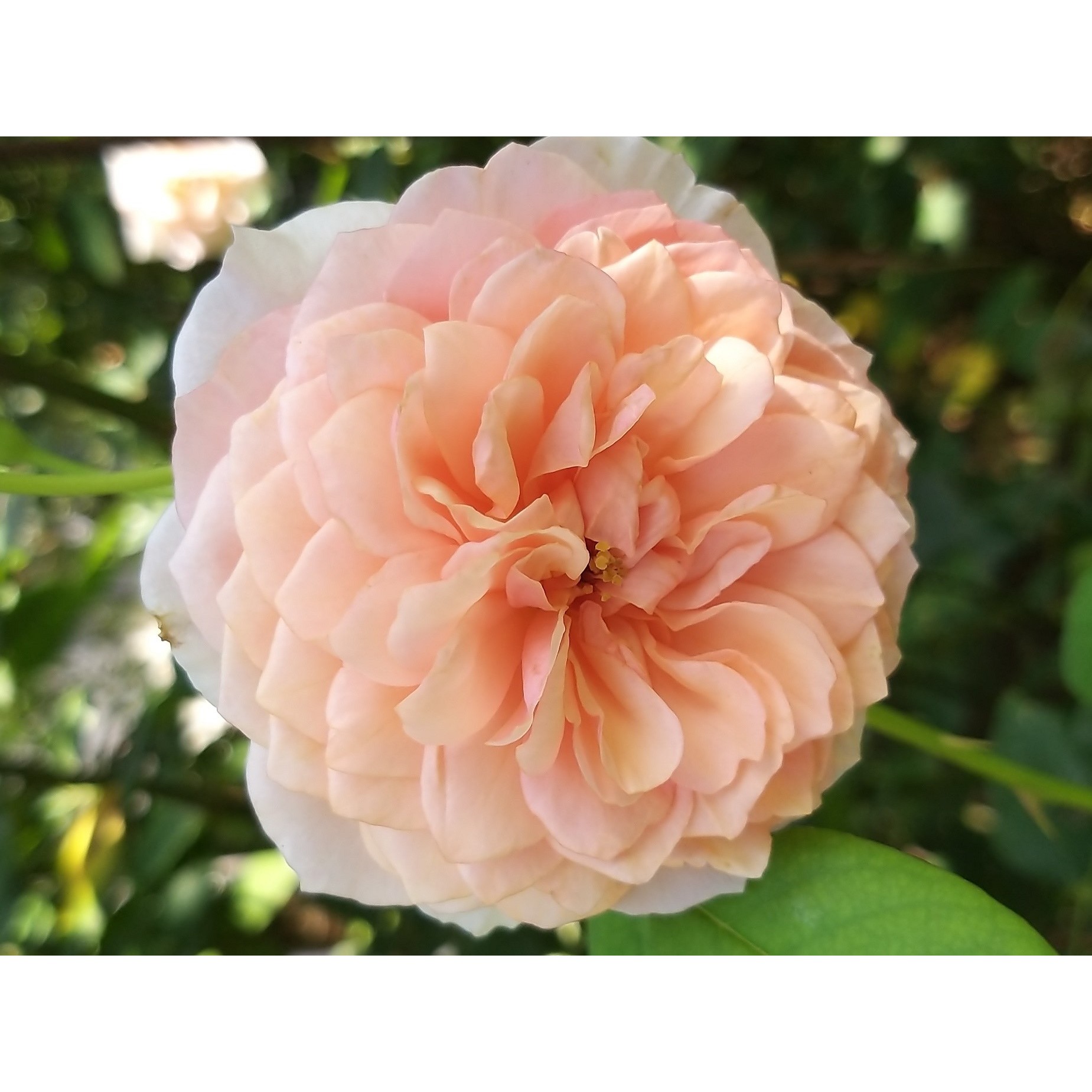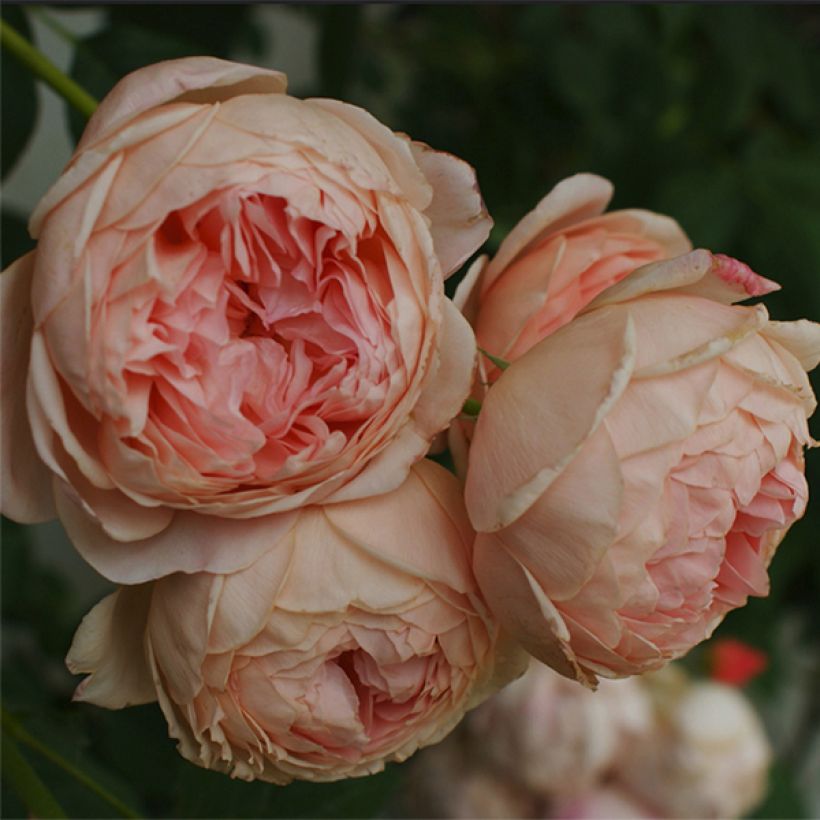

Rosa 'William Morris' - English Rose
View more pictures
Hide images

Tiphaine O.

Tiphaine O. • 38 FR

Thierry P.

September flowering - image 8
Thierry P. • 84 FR

Thierry P.

September flowering - image 5
Thierry P. • 84 FR

Thierry P.

N/A
Thierry P. • 84 FR

Françoise L.

Françoise L. • 92 FR
Rosa 'William Morris' - English Rose
Rosa William Morris® - Auswill
Auswill
Being a regular customer of David Austin, the William Morris rose is a neck (more sold on their website). The colour is magnificent. Texte révisé : "As a regular customer of David Austin, the William Morris rose is a collector's item (bestseller on their website). The colour is magnificent.
Tipha, 04/06/2021
Special offer!
Receive a €20 voucher for any order over €90 (excluding delivery costs, credit notes, and plastic-free options)!
1- Add your favorite plants to your cart.
2- Once you have reached €90, confirm your order (you can even choose the delivery date!).
3- As soon as your order is shipped, you will receive an email containing your voucher code, valid for 3 months (90 days).
Your voucher is unique and can only be used once, for any order with a minimum value of €20, excluding delivery costs.
Can be combined with other current offers, non-divisible and non-refundable.
We guarantee the quality of our plants for a full growing cycle, and will replace at our expense any plant that fails to recover under normal climatic and planting conditions.
Description
The English rose 'William Morris', like the varieties 'Geoff Hamilton' and 'A Shropshire Lad', is a very vigorous rose with an arching habit and glossy foliage, which can create a beautiful backdrop in the garden. The romanticism of its flowering is matched only by its generosity. From summer to autumn, it produces delicious apricot pink flowers, shining in classic double rosette form, exuding a powerful fragrance of tea rose, quite indescribable. Remarkably healthy, it has the advantage of tolerating competition from other plants' roots.
When pruned, this rose will form a large bush measuring 1.5 m (5ft) in height and 1.2 m (4ft) in width. Its growth is rapid and vigorous, as is often the case with roses from the Leander group, and its thorny stems are covered with disease-resistant foliage. The rose-orange buds on this large and recurrent bush are accompanied by slightly incurved rosette-shaped flowers, 9 cm (4in) wide. They are a more intense apricot pink in the centre and a pinkish flesh colour towards the outer part of the corolla. They exude a delightful fragrance, somewhat evoking banana but remaining in the tradition of tea roses.
Of exemplary vigour, even in rocky soils if they are sufficiently deep, the rose 'William Morris' 'Auswill' forms a large bush that will be magnificent at the back of borders or the base of evergreen trees such as the holm oak or Portuguese laurel. It can also be mixed with flowering shrubs (lilacs, spireas, deutzias, mock oranges, kolwitzias) in the back of the garden. In mixed borders, it will accompany perennial plants, to which it will bring exuberance and fragrance, as well as delicate annuals and even grasses, whose tufted foliage will hide its base, which tends to become bare. It can easily be trained as a climber on a small arch, a pergola, or above an entrance or gate alongside a clematis.
Obtained by David Austin in 1998. English rose from the Leander group.
Report an error about the product description
Rosa 'William Morris' - English Rose in pictures


Plant habit
Flowering
Foliage
Botanical data
Rosa
William Morris® - Auswill
Rosaceae
Auswill
Cultivar or hybrid
Planting and care
Plant your English Rose 'William Morris' in a location with ample sunlight or lightly shaded. English roses are tolerant to different soil types but do not thrive in soil with excessive limestone. These roses can grow in any garden if the soil is well-worked, not too heavy, and rich enough. To plant your rose, crumble the soil and add an amendment, such as blood, fish and bone, to the bottom of the planting hole. After planting, water generously to remove any pockets of air, and regularly for the first few weeks to help with rooting.
Pruning English roses is essential for better flowering. At the end of winter, in February-March, shorten the branches to 3-5 buds above the ground (at the lowest), choosing an outward-facing bud for a more elegant look. While pruning, remove any dead wood and unsightly branches. Make sure to prune at a slant above a bud. As the flowers bloom, remove faded flowers to stimulate the development of other buds.
Roses often have stains or may look unsightly towards the end of summer. However, this is not a problem for their development. These stains are natural and do not harm the rose.
Planting period
Intended location
Care
-
, onOrder confirmed
Reply from on Promesse de fleurs
Similar products
Haven't found what you were looking for?
Hardiness is the lowest winter temperature a plant can endure without suffering serious damage or even dying. However, hardiness is affected by location (a sheltered area, such as a patio), protection (winter cover) and soil type (hardiness is improved by well-drained soil).

Photo Sharing Terms & Conditions
In order to encourage gardeners to interact and share their experiences, Promesse de fleurs offers various media enabling content to be uploaded onto its Site - in particular via the ‘Photo sharing’ module.
The User agrees to refrain from:
- Posting any content that is illegal, prejudicial, insulting, racist, inciteful to hatred, revisionist, contrary to public decency, that infringes on privacy or on the privacy rights of third parties, in particular the publicity rights of persons and goods, intellectual property rights, or the right to privacy.
- Submitting content on behalf of a third party;
- Impersonate the identity of a third party and/or publish any personal information about a third party;
In general, the User undertakes to refrain from any unethical behaviour.
All Content (in particular text, comments, files, images, photos, videos, creative works, etc.), which may be subject to property or intellectual property rights, image or other private rights, shall remain the property of the User, subject to the limited rights granted by the terms of the licence granted by Promesse de fleurs as stated below. Users are at liberty to publish or not to publish such Content on the Site, notably via the ‘Photo Sharing’ facility, and accept that this Content shall be made public and freely accessible, notably on the Internet.
Users further acknowledge, undertake to have ,and guarantee that they hold all necessary rights and permissions to publish such material on the Site, in particular with regard to the legislation in force pertaining to any privacy, property, intellectual property, image, or contractual rights, or rights of any other nature. By publishing such Content on the Site, Users acknowledge accepting full liability as publishers of the Content within the meaning of the law, and grant Promesse de fleurs, free of charge, an inclusive, worldwide licence for the said Content for the entire duration of its publication, including all reproduction, representation, up/downloading, displaying, performing, transmission, and storage rights.
Users also grant permission for their name to be linked to the Content and accept that this link may not always be made available.
By engaging in posting material, Users consent to their Content becoming automatically accessible on the Internet, in particular on other sites and/or blogs and/or web pages of the Promesse de fleurs site, including in particular social pages and the Promesse de fleurs catalogue.
Users may secure the removal of entrusted content free of charge by issuing a simple request via our contact form.
The flowering period indicated on our website applies to countries and regions located in USDA zone 8 (France, the United Kingdom, Ireland, the Netherlands, etc.)
It will vary according to where you live:
- In zones 9 to 10 (Italy, Spain, Greece, etc.), flowering will occur about 2 to 4 weeks earlier.
- In zones 6 to 7 (Germany, Poland, Slovenia, and lower mountainous regions), flowering will be delayed by 2 to 3 weeks.
- In zone 5 (Central Europe, Scandinavia), blooming will be delayed by 3 to 5 weeks.
In temperate climates, pruning of spring-flowering shrubs (forsythia, spireas, etc.) should be done just after flowering.
Pruning of summer-flowering shrubs (Indian Lilac, Perovskia, etc.) can be done in winter or spring.
In cold regions as well as with frost-sensitive plants, avoid pruning too early when severe frosts may still occur.
The planting period indicated on our website applies to countries and regions located in USDA zone 8 (France, United Kingdom, Ireland, Netherlands).
It will vary according to where you live:
- In Mediterranean zones (Marseille, Madrid, Milan, etc.), autumn and winter are the best planting periods.
- In continental zones (Strasbourg, Munich, Vienna, etc.), delay planting by 2 to 3 weeks in spring and bring it forward by 2 to 4 weeks in autumn.
- In mountainous regions (the Alps, Pyrenees, Carpathians, etc.), it is best to plant in late spring (May-June) or late summer (August-September).
The harvesting period indicated on our website applies to countries and regions in USDA zone 8 (France, England, Ireland, the Netherlands).
In colder areas (Scandinavia, Poland, Austria...) fruit and vegetable harvests are likely to be delayed by 3-4 weeks.
In warmer areas (Italy, Spain, Greece, etc.), harvesting will probably take place earlier, depending on weather conditions.
The sowing periods indicated on our website apply to countries and regions within USDA Zone 8 (France, UK, Ireland, Netherlands).
In colder areas (Scandinavia, Poland, Austria...), delay any outdoor sowing by 3-4 weeks, or sow under glass.
In warmer climes (Italy, Spain, Greece, etc.), bring outdoor sowing forward by a few weeks.

































